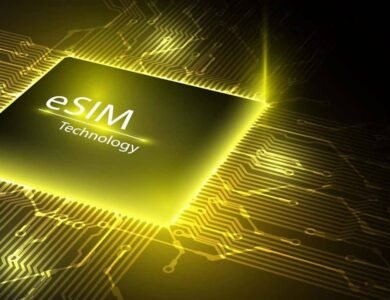The Advantages of eSIM Technology
Do you recall the time when connecting to a mobile device required inserting a hefty SIM card? Imagine yourself in the present, where eSIM technology is quickly replacing the old standard.

What is an eSIM?
eSIM or ’embedded SIM’ is a digital SIM that lets you activate a cellular plan without using a physical SIM card. It’s a small chip inside your phone, functioning just like a standard SIM card but with more convenience and flexibility.
How eSIM Works?
eSIM operates by being soldered to a device’s motherboard during manufacturing. It then gets digitally provisioned by the network carrier to provide cellular service, making the need for a physical SIM obsolete.
The History of eSIM
The first eSIM technology was introduced in 2016 by the GSM Association. Since then, it has experienced rapid adoption across the globe due to its numerous benefits.
Types of eSIM
There are two different kinds of eSIMs. One type is the Consumer eSIM, used in smartphones, tablets, and wearables. The other type is the M2M (Machine to Machine) eSIM, utilized for IoT devices.

Advantages of eSIM Technology
Now that we’ve covered the basics, let’s dive into our conversation’s heart: eSIM technology’s advantages.
Simplicity and Ease of Use
You don’t need to hunt for a paper clip or wrangle those small cards anymore thanks to eSIM. With a few touches on your tablet, you can handle anything digitally based.
Better Connectivity
eSIMs offer seamless switching between networks, ensuring constant and uninterrupted connectivity. This is a massive win for anyone, particularly those who live in areas with spotty network coverage.
Space Efficiency
The eSIM’s integration onto the device motherboard saves physical space, paving the way for slimmer devices or making room for more essential components, like a larger battery.
Environmental Impact
By eliminating the need for plastic SIM cards and related packaging, eSIM technology significantly reduces waste, contributing to a more sustainable and environmentally-friendly world.
Increased Flexibility
eSIM allows users to switch between network providers effortlessly, liberating them from long-term contracts and making it easier to take advantage of the best service plans.
International Travel Convenience
Are you traveling abroad? eSIMs eliminate the need for buying local SIM cards, allowing you to switch to a local network quickly and hassle-free.
The Future of eSIM
With its numerous advantages, eSIM technology is set to revolutionize how we connect our devices. Its adoption across multiple device categories signifies a promising future, rendering the physical SIM card a thing of the past.
Conclusion
In conclusion, the revolutionary technology of eSIM is transforming the telecommunications industry. Its benefits include improved connectivity, increased flexibility, and positive environmental impact, making it a modern and practical solution for our connected world. It’s time to welcome the future!
FAQ
To activate an eSIM, you must access the device settings and select the desired network. Follow the on-screen instructions to complete the activation process, which may involve scanning a QR code provided by your network provider. Absolutely! One of the significant advantages of eSIMs is the ability to switch between network providers without physically changing SIM cards. Simply choose the desired network from your device settings, and the eSIM will connect you to the selected provider. Yes, eSIMs offer enhanced security features compared to traditional SIM cards. They are tamper-resistant, and their embedded nature reduces the risk of physical theft or damage. Additionally, eSIM technology supports advanced authentication and encryption mechanisms, ensuring secure mobile communications. Using eSIMs can actually lead to cost savings. Users can switch between network providers to take advantage of better offers and coverage without purchasing physical SIM cards. Network providers also benefit from reduced physical SIM card production and distribution costs. How do I activate an eSIM?
Can I switch between network providers easily with eSIMs?
Are eSIMs secure?
Are there any additional costs associated with using eSIMs?








